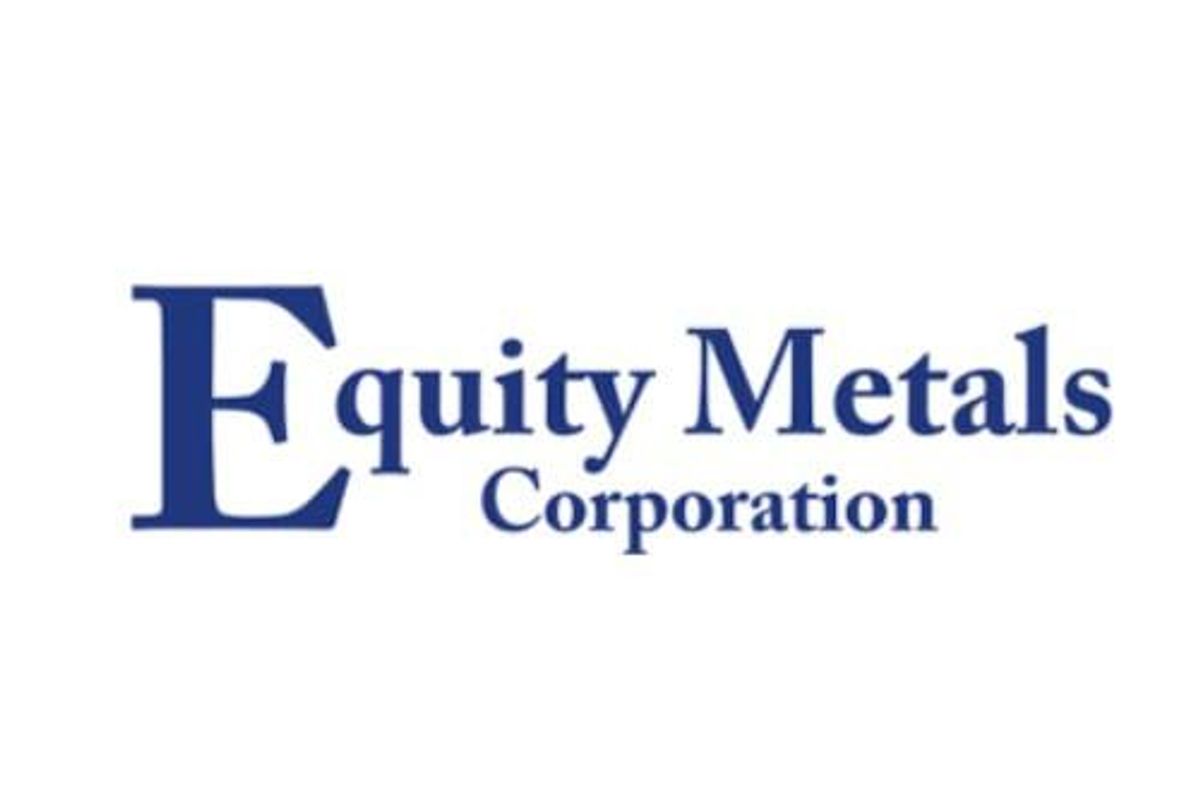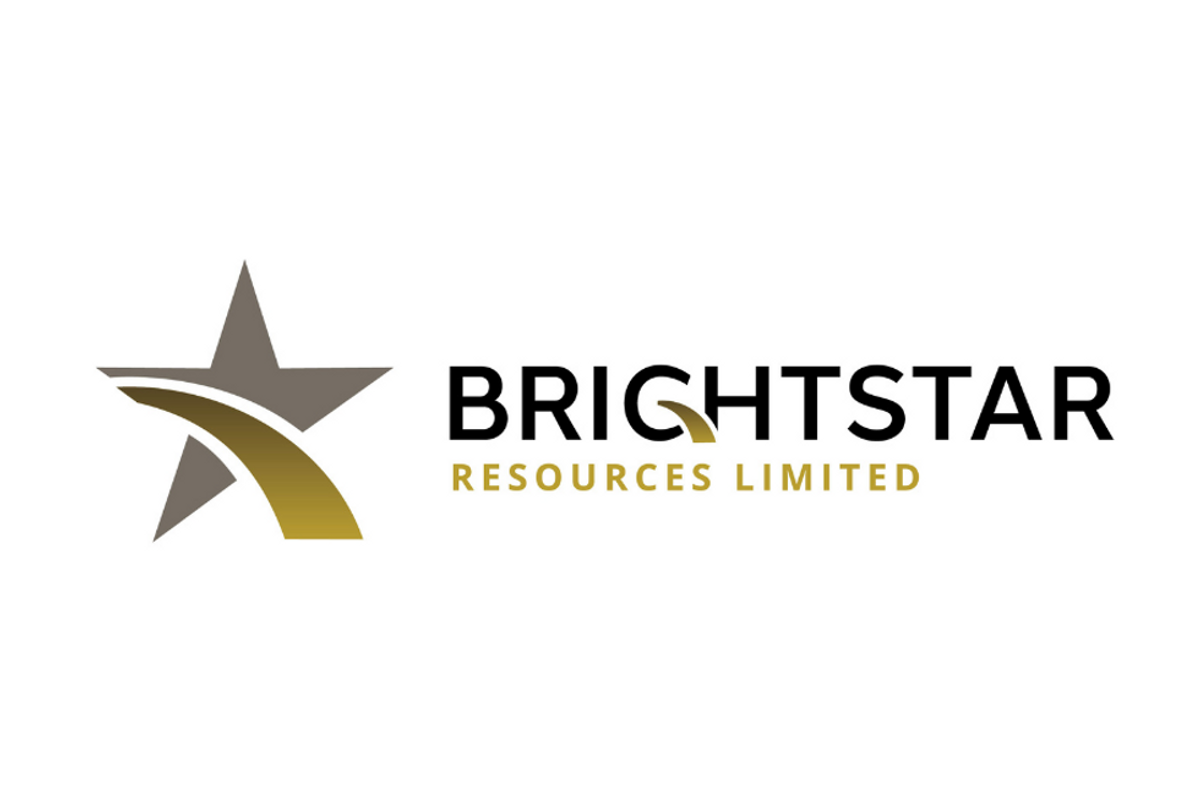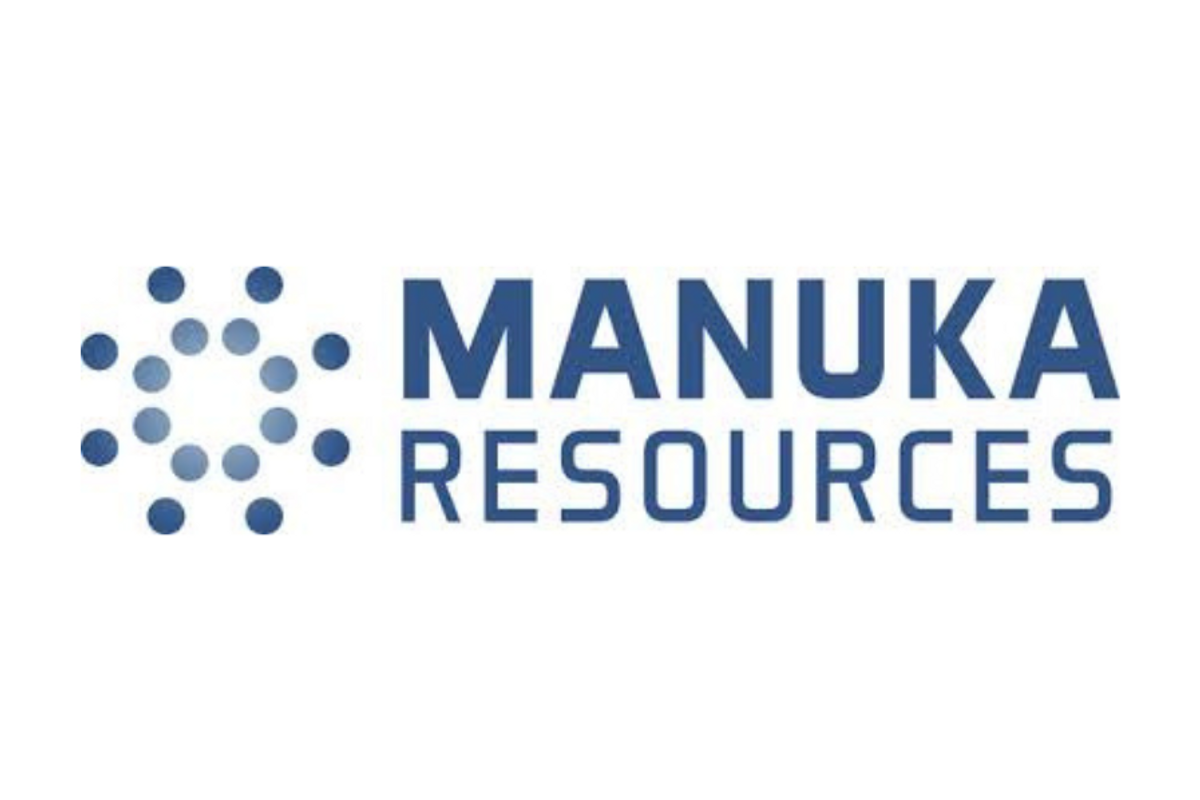
April 30, 2024
Manuka Resources Limited (“Manuka” or the “Company”) is pleased to provide the following report on its activities during the quarter ending 31 March 2024.
HIGHLIGHTS
During the Quarter
- The Company investigated the economic and strategic benefits of establishing fit-for-purpose ore processing and gold doré production facility at Mt Boppy.
- Accordingly, the transporting to, and processing of, Mt Boppy ore through the Company’s Wonawinta plant, located 150km south, was placed on hold.
- Results from a sonic drilling program were received improving the confidence level of the Mt Boppy Resource and supporting the development of a longer term mine plan.
- Income from the sale of 201oz gold and 2,487oz silver recovered from Mt Boppy ore, together with funds of A$3.9 million received from a combination of placement and SPP, were used to offset costs associated with the ramp-down of operations and working capital requirements.
Post Quarter End
- The Company announced the results of its Mt Boppy investigations outlining an A$11.6M upfront capital cost and an initial 5-year mine plan to deliver an average EBITDA of A$19M per annum commencing Q4 20241.
- The mine plan was supported by an upgrade in the Mt Boppy Resource which saw Measured and Indicated Resources increase to 82% of the total Resource2.
- The Company received A$1.1M from an application made under the Australian Government’s R&D tax incentive scheme for a successful process improvement program undertaken to enhance silver production at Wonawinta. The Company is targeting the release of an updated Reserve Statement for Wonawinta as a standalone silver operation during the current quarter.
- The Company was specifically invited to submit an application for the world-class Taranaki VTM Iron Sands Project to be included as a Listed Project within New Zealand’s Fast Track Consenting Bill, legislation to streamline decision making and facilitate the delivery projects with significant regional or national benefits.
Dennis Karp, Manuka’s Executive Chairman, commented:
“The March quarter has been one of transition and one that has seen the Company decisively pivot its strategy toward a staged, self-sustaining growth plan.
Manuka Resources is uniquely positioned amongst its ASX peers to leverage buoyant gold and silver markets. In the Mt Boppy and Wonawinta mines, we have a low capex pathway to deliver near term gold and silver production and free cashflow to fund exploration, Resource growth and mine life extension.
Looking further ahead, the invitation to apply for inclusion as a Listed Project within New Zealand’s Fast Track Consenting Bill provides line of sight on the progressing of our world-class Taranaki VTM Iron Sands Project
We are looking forward toward the next quarter and next 12 month with great optimism and confidence that our strategy will deliver results for our shareholders.”
Click here for the full ASX Release
This article includes content from Manuka Resources, licensed for the purpose of publishing on Investing News Australia. This article does not constitute financial product advice. It is your responsibility to perform proper due diligence before acting upon any information provided here. Please refer to our full disclaimer here.
MKR:AU

Sign up to get your FREE
Manuka Resources Investor Kit
and hear about exciting investment opportunities.
- Corporate info
- Insights
- Growth strategies
- Upcoming projects
GET YOUR FREE INVESTOR KIT
The Conversation (0)
26 March
Manuka Resources
Investor Insight
Manuka Resources’ unique value proposition is focused on its three fully licenced projects, which include two precious metals assets in one of Australia’s most prolific regions for base and precious metals, and a company-making iron sands (vanadium and titanium co-products) project in New Zealand’s exclusive economic zone (EEZ) off the Taranaki bight. Manuka Resources is well-placed to deliver significant shareholder value, driven by a phased strategy that includes a clear pathway to near-term precious metals production.
Strategy Overview
Manuka Resources (ASX:MKR) is focused on bringing its precious metals assets in the Cobar Basin into production, as well as progressing its New Zealand domiciled Taranaki VTM iron sands project.
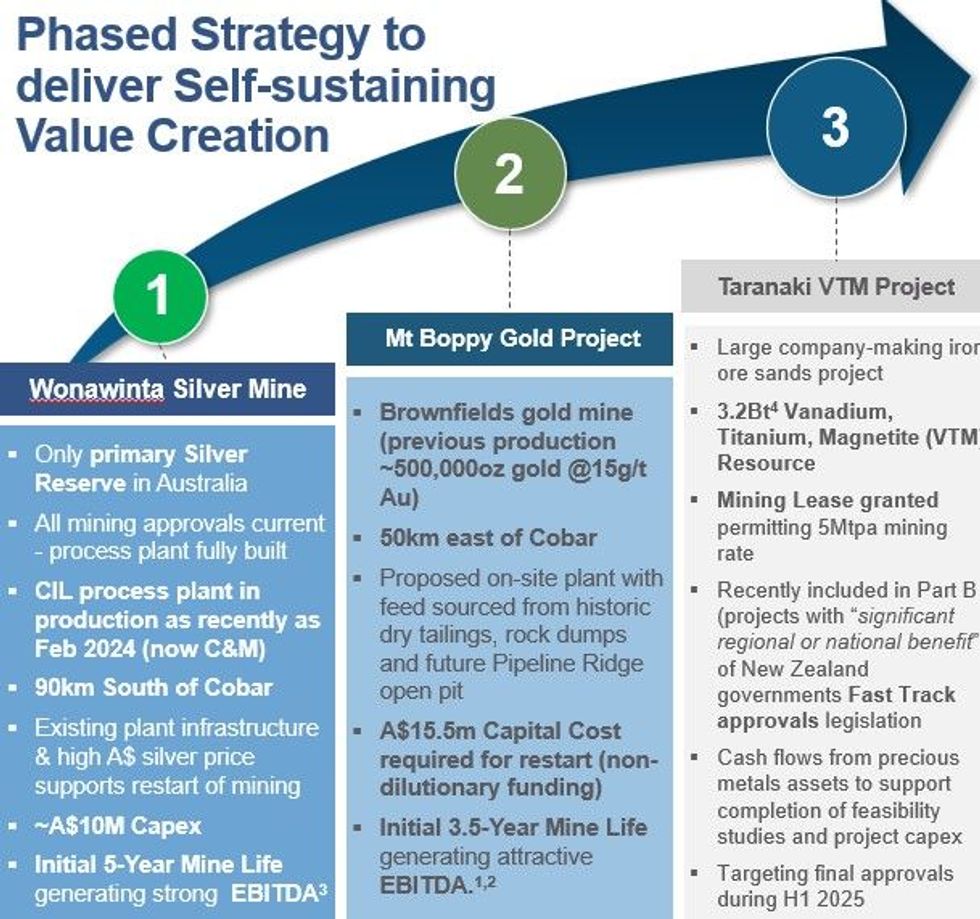
The company previously revealed a phased strategy focused on delivering maximum value to its shareholders. The first phase focused on bringing back the Mt Boppy gold mine into production and it released an optimised production plan for the mine restart. At the time, the company believed silver production would follow gold but noted it was flexible in this regard. In any event and simultaneous to this, will be the ongoing development of the Taranaki vanadium titano-magnetite (VTM) project.

The Cobar Basin located in the central-west of New South Wales, is one of the richest mining provinces in Australia, home to some of Australia’s largest mining companies and explorers.
The Mt Boppy gold mine was historically one of the richest in NSW, Australia and produced ~500,000 oz gold at an average grade of 15 grams per ton (g/t) gold. Accordingly, the company is very excited about its exploration potential.

Drone image looking South showing the main components of the Rock Dump and tailing resources in relation to the Mt. Boppy open pit.
The initial five-year mine plan is largely focused on the screening and processing of gold-bearing waste material above ground on the Mt Boppy mine site. The company had been processing these wastes from June 2023 to December 2023 at its Wonawinta plant and now will look to optimize the process.
The Wonawinta silver project will be the largest primary silver producer in Australia and expected to be back in silver production within 12 months. Manuka has released a maiden ore reserve (under its ownership) of 4.8Mt1 at 53.8g/t silver containing 8.4Moz of silver comprising proven ore reserves of 0.8Mt at 50.8g/t silver; and probable ore reserves of 4.1Mt at 54.3g/t silver. Ore Reserve is based solely on shallow (<40m deep) oxide material.

The Wonawinta 100tph Ball Mill
The gold and silver market appears to be in an upward trend, with prices for both precious metals hitting their all-time highs recently, in Australian dollar terms for silver, which bodes very positively for MKR.
Company Highlights
- Manuka Resources is an ASX-listed mining company focused on producing gold and silver from its two 100 percent owned fully permitted projects (one gold and one silver) in the Cobar Basin in New South Wales, Australia.
- In addition, MKR’s wholly owned subsidiary Trans-Tasman Resources Limited (“TTR”) is the owner of the Taranaki VTM (vanadiferous titanomagnetite) iron sands project, located in the New Zealand EEZ, off the south-west coast of the north island.
- Manuka released the details of the Taranaki VTM project’s pre-feasibility study (PFS) on 26 March 2025, which highlights the extremely robust economics of the project with an NPV10 of US$1.2B and IRR 39 percent
- TTR will also be lodging its application under New Zealand’s Fast Track Approvals Act for the Taranaki VTM project imminently. (The project was included in Schedule 2 of the Act). Successful conclusion of review under the Fast Track pathway will result in final regulatory approvals (marine discharge consent) being granted, completing the full suite of consents to operate the project for 20 years.
- The Company’s primary focus for its precious metals assets is on bringing both the fully permitted Wonawinta silver project and the Mt Boppy gold mine back into production during 2025. The Wonawinta processing plant (primarily constructed for silver production in 2012 with production capacity of 850,000-1 million tpa) has been recently used for both gold and silver processing and is on active care and maintenance for rapid restart..
- The Wonawinta silver project was previously the largest primary producer of silver in Australia, and Manuka expects this to again be the case once production restarts.
- While the substantially higher gold prices have been securing headlines over the past six months, it is worth noting that the silver price is also trading at an all time high which makes restarting the project very attractive (the all time high for silver is against the Australian dollar, currently silver is around AU$54/oz silver).
- Manuka released its maiden silver reserve in October 2024 making it the only production ready silver reserve on a project based in Australia.
- Elevated gold and silver prices should materially benefit Manuka Resources, resulting in strong profitability and cash flows once its projects move into production.
Key Projects
Mt Boppy Gold Project

The Mt Boppy gold project comprises three mining leases, four gold leases and one exploration license, spanning an area of more than 210 sq km in the prolific Cobar Basin in New South Wales, Australia. The project was acquired by Manuka in 2019 and has a current mineral resource of 4.3 Mt at 1.19 g/t gold. This includes a combination of oxidized and transitional/fresh mineralization in the ground, as well as mineralized rock dumps and tailings.
Historically, Manuka Resources has processed its stockpiles and gold mineralized waste products through its Wonawinta processing plant. However, inefficiencies associated with trucking and processing ore at the distant Wonawinta plant has led the company to revise its strategy. It is now looking to construct a processing plant at Mt Boppy so that ore from the mine can be processed on-site. Mt Boppy has excellent infrastructure including a 48-person mine camp and is fully permitted for the proposed processing plant and on-site production.

The updated mineral resource comprises 4.28 Mt at 1.19 g/t gold for 163 koz of contained gold, of which 82 percent is in the measured and indicated categories.
An on-site plant will offer significant cost savings and improve the project economics.
Manuka Resources anticipates Mt Boppy to deliver total EBITDA of >AU$90 million and cash flow of >AU$80 million over a five-year mine life.
Wonawinta Silver Mine Project

The Wonawinta plant
The Wonawinta project is fully permitted with all the necessary infrastructure, including an 850,000 to 1 million tpa processing plant. The plant has been used for processing ore from Mt Boppy. The Wonawinta silver mine is currently under care and maintenance. The company is considering the possibility of resuming operations at Wonawinta, leveraging the improved silver price environment. Manuka has released a maiden ore reserve (under its ownership):
- Ore Reserve of 4.8 Mt at 53.8 g/t silver containing 8.4 Moz of silver comprising:
- Proved Ore Reserves of 0.8 Mt at 50.8 g/t silver; and
- Probable Ore Reserves of 4.1 Mt at 54.3 g/t Ag.
The maiden silver ore reserve and the preparation of an implementation plan for Wonawinta support the potential restart of silver mining and processing operations in the near
future. The company is reviewing its silver restart plans in light of the current price increases and expects to announce a decision before the end of May 2025.
Taranaki VTM Project

The Taranaki VTM project is located within New Zealand's exclusive economic zone, approximately 22 to 36 kilometres offshore, outside the 12 nautical mile boundary from the coastline. The project boasts a JORC resource of 3.2 billion tons at 10.17 percent iron oxide, 1.03 percent titanium dioxide and 0.05 percent vanadium oxide. It holds a mining license allowing initial extraction of 50 million tons annually, resulting in 5 million tons of VTM concentrate per year for 20 years (concentrate grade of 56 to 57 percent iron, 8.5 percent titanium dioxide and 0.5 percent vanadium pentoxide). At this extraction rate, the JORC resource provides approximately 60 years of potential mining inventory.
The project was included in the New Zealand government's Schedule 2 of the Fast Track Approvals Act 2024. The next step for Manuka was to complete pre-feasibility study (“PFS”) on the project. This was released to the market on 26 March 2025 and presents an extremely robust economic outlook for the project as can be seen below.

Management Team
Dennis Karp – Executive Chairman
Dennis Karp is a former commodities trader with nearly four decades of corporate experience. He started his career in 1983 and worked in HSBC until 1997 before moving to Tennant, one of Australia’s largest physical commodities trading companies with operations in Asia and Europe. He was a principal shareholder of Tennant Metals until 2010 and a managing director until December 2014. He founded ResCap in December 2014. Since then, he has participated in diverse resource projects and investment opportunities across base metals and bulk commodities. He holds a Bachelor of Commerce from the University of Cape Town.
Alan Eggers – Executive Director
Alan Eggers has over 40 years of experience in the mining sector. He is a geologist and was the founder of Summit Resources, which became an ASX top 200 company and was acquired by Paladin Energy in 2007 for AU$1.2 billion. Throughout his career, he has held director positions at numerous companies. He holds a Bachelor of Science, Honours, and Master of Science degrees from Victoria University of Wellington. He is recognized as a fellow of the Society of Economic Geologists and holds memberships in AusIMM and the Australian Institute of Geoscientists.
John Seton – Non-executive Director
John Seton is a lawyer with extensive experience in the mineral resources sector. He has served as director in several ASX and NZX listed companies. He holds a Bachelor of Laws from Victoria University, Wellington, and a Master of Law (Honours) from the University of Auckland and is a chartered fellow of the New Zealand Institute of Directors.
Haydn Lynch – Chief Operating Officer
Haydn Lynch has over 25 years of experience in M&A, capital markets and private equity. He has been involved in executing several domestic and cross-border transactions in various sectors including metals and mining, and industrials. He has held leadership roles in global investment banks, including Bankers Trust Australia, Investec Bank, RBC Capital Markets and Southern Cross Equities. He has undergraduate degrees in mechanical engineering and economics from the University of Queensland and a Master in Commerce from the University of New South Wales.
Dieter Engelhardt – Chief Metallurgist and General Manager
Dieter Engelhardt has over 30 years of experience in the mining industry including roles as senior metallurgist at Telfer Gold Mine and Northparkes Mines, resident manager at McKinnons Gold Mine, and manager of ore processing at CSA Mine. Engelhardt was employed by Newcrest Mining (now Newmont) in various roles, including as manager of ore processing and principal metallurgist.
Phil Bentley – Chief Geologist
Phil Bentley has over 40 years of experience in the mining industry across New Zealand, South Africa, and Australia, holding senior geological roles as well as senior management and director positions. He has worked as a chief geologist at Randgold Resources and Randgold & Exploration, Global Head of Exploration at Trafigura Mining Services, and Principal Geologist Africa at CSA Global South Africa. He is a Qualified person under NI 43-101 (Canada) and JORC (Australia) and is a Fellow of the South African Geological Society. He holds a Bachelor of Science (Honours) in Geology at Victoria University of Wellington. He also has a Masters of Science in Economic Geology at Victoria University of Wellington and a Master’s of Science in Mineral Exploration from Rhodes University, Grahamstown South Africa.
Keep reading...Show less
Near-term production from both its silver and gold projects located in the Cobar Basin, Central West, New South Wales
30 May
Taranaki VTM Continues to Progress Through Fast-track
15 May
Taranaki Project proceeds to next stage of NZ Fast-Track
30 April
March 2025 Quarter Activities and Cashflow Reports
1h
Equity Metals
Investor Insight
Equity Metals offers investors exposure to high-grade silver and gold discoveries in British Columbia through a dual-track strategy of expanding its flagship Silver Queen resource and advancing the newly acquired Arlington district.
Overview
Equity Metals (TSXV:EQTY,OTCQB:EQMEF,FSE:EGSD) is fast-tracking exploration at its 100 percent owned Silver Queen project in British Columbia, targeting resource expansion and derisking of one of the province's most prospective high-grade polymetallic deposits. Located within the prolific Skeena Arch near the historic Equity Silver and Huckleberry mines, Silver Queen boasts an NI 43-101 compliant resource of 62.8 million ounces (Moz) silver equivalent (indicated) and 22.5 Moz silver equivalent (inferred), with 2024 drilling extending known zones and identifying new mineralized areas.
Complementing this is the Arlington gold-copper-silver project, a newly acquired district-scale, never-before drill-tested project located in southern BC's Greenwood Mining Division. With analogues to historic producers like Phoenix and Buckhorn, Arlington is being aggressively explored with 3,000 meters of drilling underway, focused on delineating high-grade gold-enriched polymetallic mineralization.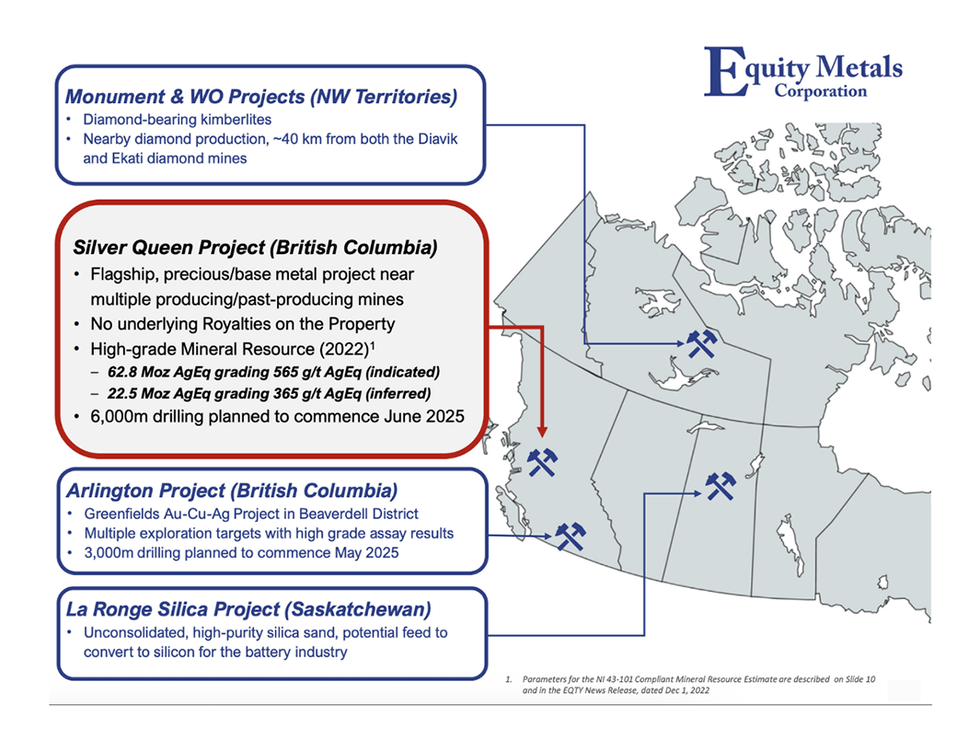
Parameters for the NI 43-101 Compliant Mineral Resource Estimate are in the Appendix and in the EQTY News Release, dated Dec 1, 2022
Together, Silver Queen and Arlington offer a balanced exposure to high-grade polymetallic and gold-rich systems. The former provides near-term resource expansion and development optionality, while the latter opens up district-scale discovery potential.
In addition, Equity Metals holds interests in the Monument and WO diamond properties in the Lac de Gras region (Northwest Territories), proximal to the Diavik and Ekati mines, and the La Ronge silica project in Saskatchewan. These projects offer upside optionality for strategic partnerships or asset sales.
Company Highlights
- Flagship High-grade Project – Silver Queen: Over 85 million silver-equivalent ounces defined in the heart of BC's Skeena Arch mineral belt, surrounded by Tier 1 infrastructure and historical producers.
- New Gold Discovery Potential – Arlington project: A district-scale, early-stage gold-copper-silver system with analogues to major past-producing skarn and vein-hosted mines in the region.
- Fully Funded for 2025: 9,000 meters of combined drilling is underway across both Silver Queen and Arlington with assay results expected to drive news flow through Q3 and Q4 2025.
- Experienced Management and Technical Team: Track record of discovery and mine development across North America, including the Penasquito and Eskay Creek mines and the Wind Mountain project.
- Exposure to Critical and Precious Metals: Balanced portfolio spanning silver, gold, copper and diamonds with optionality in battery materials (silica) and critical minerals.
Key Projects
Silver Queen Project
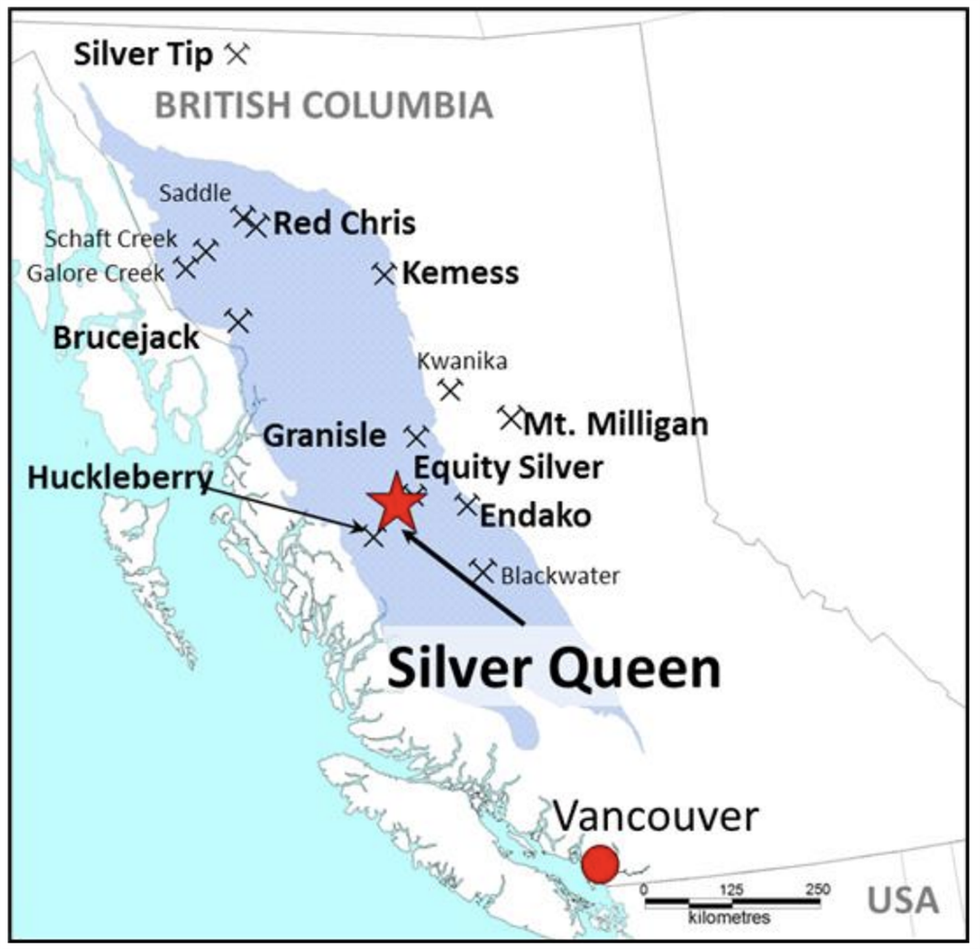
The Silver Queen project is Equity Metals’ 100 percent owned flagship asset located in central British Columbia’s prolific Skeena Arch, approximately 35 km south of Houston. This 18,871-hectare property consists of 17 crown-granted titles and 46 tenure claims in the Omineca Mining Division. Surrounded by past-producing and active mines, including the Equity silver mine, Berg, Endako and Mt. Milligan, the project benefits from established infrastructure such as roads, power and rail access.
Silver Queen hosts a high-grade polymetallic system featuring silver, gold, copper, lead and zinc mineralization. The project is underpinned by a robust NI 43-101 compliant resource estimate (as of December 2022) consisting of 62.8 million ounces (Moz) silver-equivalent (AgEq) in the indicated category grading 565 grams per ton (g/t) AgEq, and 22.5 Moz AgEq in the inferred category grading 365 g/t AgEq. This includes 3.46 million tons (Mt) of indicated resources averaging 189 g/t silver, 2.13 g/t gold, 0.24 percent copper, 0.6 percent lead, and 3.5 percent zinc, and 1.92 Mt of inferred resources grading 167 g/t silver, 0.82 g/t gold, 0.23 percent copper, 0.5 percent lead, and 2 percent zinc.
The mineralization occurs in multiple steeply dipping epithermal vein systems, subdivided into the No. 3, NG-3, Camp and Sveinson veins. Each exhibits distinct metal zonation – the Camp veins are silver-dominant, while the Sveinson, No. 3 and NG-3 show a stronger gold bias. Bonanza grades have been intercepted at multiple locations, including down-hole drill core intervals assaying up to 56,115 g/t silver over 0.3 metres in recent drill results. High sulphide and low sulphide vein environments have both been identified, suggesting a long-lived and multi-phase mineralizing event.
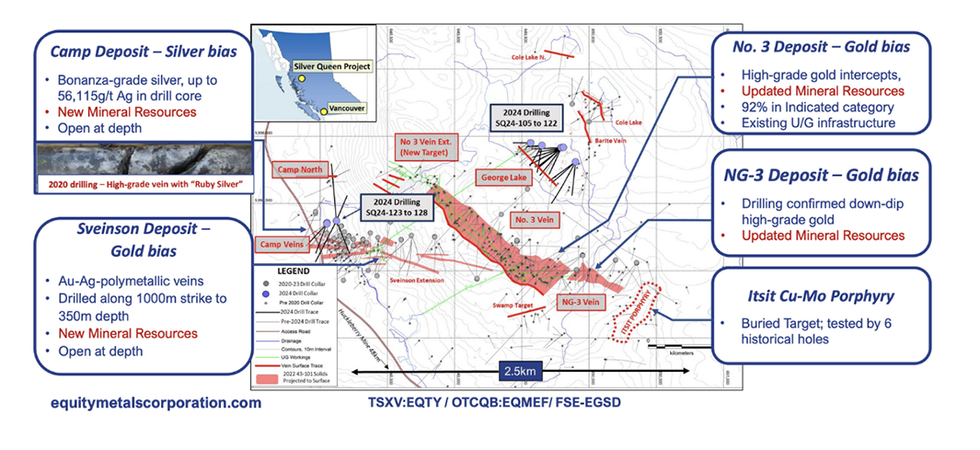
Since late 2020, Equity has completed 52,877 meters of drilling in 146 holes, targeting extensions and new zones of mineralization. In 2024 alone, four target areas – George Lake, Camp North, No. 3 North and Camp-Sveinson – were tested via 17,209 meters across 42 holes. Drilling resulted in the delineation of a 550-metre strike-length for mineralization in the George Lake target and a 400-metre strike-length for mineralization in the No. 3 North target, as well as several extensions of earlier identified veins in the Camp Deposit and a new discovery in the Camp North target. A 6,000-meter 2025 drilling program will further test these zones with updated modeling and resource growth expected in Q3 2025.
Metallurgical testing completed in both 1988 and 2022 yielded positive recoveries: 83 percent gold, 95 percent silver, 93 percent copper, 91 percent lead, and 98 percent zinc. A follow-up metallurgical program is planned to support preliminary development studies. With extensive underground development (~9 km of historic workings) and proximity to key infrastructure, the Silver Queen project is well positioned for advancement toward economic studies and ultimately, a potential strategic transaction.
Arlington Project
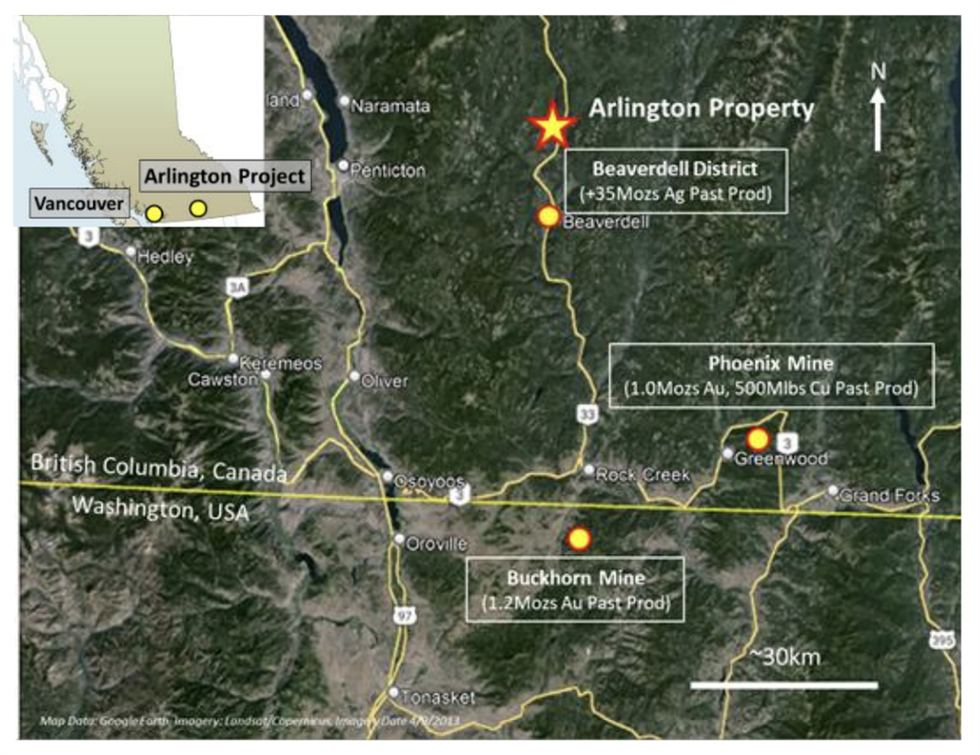
The Arlington project is a 3,584-hectare, early-stage exploration asset located in southern British Columbia’s Greenwood Mining Division, approximately 65 km south of Kelowna. The project sits within the prolific Quesnel Terrane and is accessible year-round via Highway 33 and a network of logging roads. The region hosts several historical producers including the Buckhorn, Phoenix, and Beaverdell mines, which have collectively yielded more than 2 Moz gold, 6 Moz silver and 500 Mlb copper.
Arlington encompasses multiple mineral occurrences and at least four deposit styles across a more than 5 km strike length. Historic and recent surface work has confirmed high-grade mineralization with rock samples returning values up to 11.67 g/t gold, 211 g/t silver, and 3.22 percent copper. The 2025 exploration program, currently underway, includes a 3,000-metre drill campaign primarily targeting the Fresh Pots gold-silver anomaly – a large (2 km x 1 km) intrusion-related gold system delineated by multi-element soil geochemistry and magnetic lows.
Other high-priority targets include:
- Rona Porphyry Target: A copper-molybdenum-gold system with pyroxenite intrusive-hosted mineralization. Rock chip assays have returned >1 percent molybdenum, 0.6 g/t gold, and 32.4 g/t silver. The area is characterized by a large copper-nickel soil anomaly and widespread argillic alteration in adjacent sedimentary rocks.
- Arlington Polymetallic Veins: A structurally controlled vein system with documented historic workings. Highlights include Arlington South (11.67 g/t gold, 3.22 percent copper) and Arlington North (1.86 g/t gold, 1.07 percent copper), suggesting vertical metal zonation and potential for stacked vein systems.
- Skarn and Replacement Targets: Notably at the Bru and Arlington zones, analogous to Buckhorn and Phoenix, where gold-copper magnetite skarns produced over 1 Moz historically.
In early 2025, Equity Metals completed a property-wide airborne magnetic/radiometric survey and LiDAR mapping campaign to refine targeting. Soil and till geochemistry, IP surveying and mapping continue across the license area to delineate follow-up drill targets for 2026.
Management Team
Lawrence Page – Chairman and Director
A seasoned mining executive with over four decades of experience, Lawrence Page has helped finance and develop several major discoveries including Penasquito (Mexico), Eskay Creek and Hemlo. He brings strategic oversight and a deep network within the exploration and capital markets community.
Joseph A. Kizis Jr. – President and Director
With over 40 years of mineral exploration experience, Joseph Kizis has been instrumental in advancing gold, silver and base metal projects across North America. He is also president of Bravada Gold and has played key roles in advancing Wind Mountain in Nevada and Homestake Ridge in BC.
Robert W.J. Macdonald – VP Exploration
Robert Macdonald leads Equity Metals’ technical team and brings extensive epithermal and porphyry system expertise. His past project experience includes Homestake Ridge in BC and Cerro Las Minitas in Mexico, and he is the Qualified Person for all technical disclosures.
Killian Ruby – CFO and Director
As president and CEO of Malaspina Consultants and a former senior manager at KPMG LLP, Killian Ruby brings financial discipline, governance strength and tax expertise. He also serves as CFO for several junior resource companies.
John Kerr – Director
A professional engineer with five decades of exploration experience, John Kerr has contributed to the discovery and development of projects such as Santa Fe and Mindora in Nevada, and Frasergold in BC.
Courtney Shearer – Director
Courtney Shearer has served in executive and advisory roles with multiple Canadian mining companies, including San Gold Corporation, where he led strategic evaluations and project planning initiatives.
Arie Page – Corporate Secretary
Arie Page provides legal and corporate compliance support and has served as corporate secretary for numerous public companies within the Manex Resource Group.
Appendix:
Silver Queen Mineral Resource Estimate (NI 43-101 Compliant, Dec. 1, 2022) (C$100 NSR cut-off)
- The current Mineral Resource Estimate was prepared by Garth Kirkham, P.Geo., of Kirkham Geosystems Ltd and Eugene Puritch, P. Eng., FEC, CET and Fred Brown, P, Geo. of P&E Mining Consultants Inc. (“P&E”), Independent Qualified Persons (“QP”), as defined by National instrument 43-101.
- All Mineral Resources have been estimated in accordance with Canadian Institute of Mining and Metallurgy and Petroleum (“CIM”) definitions, as required under National Instrument 43-101 (“NI43-101”).
- Mineral Resources were constrained using continuous mining units demonstrating reasonable prospects of eventual economic extraction.
- Silver and Gold Equivalents were calculated from the interpolated block values using relative process recoveries and prices between the component metals and silver to determine a final AgEq and AuEq values.
- Silver and Gold Equivalents and NSR$/t values were calculated using average long-term prices of $20/oz silver, $1,700/oz gold, $3.50/lb copper, $0.95/lb lead and $1.45/lb zinc. All metal prices are stated in $USD. The C$100/tonne NSR cut-off grade value for the underground Mineral Resource was derived from mining costs of C$70/t, with process costs of C$20/t and G&A of C$10/t. Process recoveries used were Au 70%, Ag 80%, Cu 80%, Pb 81% and Zn 90%.
- Grade capping was performed on 1m composites for the No. 3 and NG-3 veins and whole vein composites for the Camp and Sveinson veins. For the No. 3 and NG-3 veins Inverse distance cubed (I/d3) was utilized for grade interpolation for Au and Ag and inverse distance squared (I/d2) was utilized for Cu, Pb and Zn. Inverse distance squared (I/d2) was used for all metals in the Camp and Sveinson veins.
- A bulk density of 3.56t/m3 was used for all tonnage calculations in the No. 3 and NG-3 veins. A variable density with a 3.15 average was used for the Camp and Sveinson veins.
- Mineral Resources are not Mineral Reserves until they have demonstrated economic viability. Mineral Resource Estimates do not account for a Mineral Resource’s mineability, selectivity, mining loss, or dilution.
- An Inferred Mineral Resource has a lower level of confidence than that applying to an Indicated Mineral Resource and must not be converted to a Mineral Reserve. It is reasonably expected that the majority of Inferred Mineral Resources could be upgraded to Indicated Mineral Resources with continued exploration.
- All figures are rounded to reflect the relative accuracy of the estimate and therefore numbers may not appear to add precisely.
Keep reading...Show less
2h
Zijin Mining to Acquire Major Kazakh Gold Mine for US$1.2 Billion
China’s Zijin Mining Group (OTC Pink:ZIJMF,HKEX:2899,SHA:601899), the country’s largest producer of gold and copper, has agreed to acquire Kazakhstan’s Raygorodok gold mine for US$1.2 billion.
The deal, announced on Monday (June 30) through a filing to the Hong Kong Stock Exchange, furthers the company’s ambition of becoming one of the world’s top three gold producers by 2028.
Raygorodok is reportedly among the largest and most technologically advanced gold projects in Central Asia. It produced 6 metric tons of gold in 2024 at a production cost of US$796 per ounce, excluding non-cash items.
With a remaining mine life of 16 years and average annual output of 5.5 metric tons of gold, Zijin expects the mine, located in Northern Kazakhstan, to boost both its earnings and production starting this year.
Raygorodok's total ore reserves are estimated at 94.9 million metric tons, containing approximately 100.6 metric tons (3.5 million ounces) of gold, based on a gold price of US$1,750 per ounce.
However, Zijin believes that considering the current market for the yellow metal, there is clear potential to expand production and reserves by improving the pit design under a higher gold price assumption. Furthermore, a US$420 million processing plant, operational since mid-2022, has significantly expanded the mine’s output capacity.
Annual production rose from 50,000 ounces in 2023 to an expected 190,000 ounces in 2025, using carbon-in-pulp and heap-leaching technologies that improve extraction efficiency from low-grade ore. As of the end of 2024, Raygorodok reported net assets of US$291 million and posted a net profit of US$202 million on US$473 million in revenue.
The asset is currently owned by Cantech, a Kazakhstan-based firm 65 percent held by V Group International, one of the country’s largest equity investment companies, and backed by US private equity firm Resource Capital Funds.
Through its subsidiaries, Zijin Gold International and Jinha Mining, Zijin signed definitive agreements to purchase all rights and interests in RG Gold and RG Processing, the Kazakhstan-based entities that own and operate the mine.
The acquisition is expected to close by the end of September of this year, pending regulatory approvals from both Chinese and Kazakh authorities.
Zijin Gold IPO in the works
Zijin operates gold mines in China and globally in locations such as Africa and South America.
But Raygorodok is set to become one of its flagship assets, aligning with the group’s goal of raising annual gold production by 35 percent — from 73 metric tons in 2024 to 100 to 110 metric tons by 2028.
The acquisition also serves a broader corporate strategy: the planned initial public offering (IPO) of Zijin Gold International, the group’s overseas gold division, on the Hong Kong Stock Exchange.
Established in 2007, Zijin Gold International is being positioned as the vehicle for consolidating Zijin’s foreign gold assets and unlocking shareholder value. The IPO is expected to raise between US$1.5 billion and US$2 billion. Proceeds will be used for further expansion across Africa and South America.
The spinoff remains subject to approval from Chinese regulators, Zijin shareholders, the Hong Kong Securities and Futures Commission and the Hong Kong Stock Exchange.
Zijin has emphasized that the listing will not affect its control over the subsidiary. Furthermore, Zijin Gold International will remain under Zijin's consolidated financial statements post-listing.
Don’t forget to follow us @INN_Resource for real-time updates!
Securities Disclosure: I, Giann Liguid, hold no direct investment interest in any company mentioned in this article.
Keep reading...Show less
19h
Merger Discussions Between Brightstar and Aurumin
20h
Menzies and Laverton Gold Projects Feasibility Study
27 June
Top 5 Canadian Mining Stocks This Week: Onyx Gold Shines with 118 Percent Gain
Welcome to the Investing News Network's weekly look at the best-performing Canadian mining stocks on the TSX, TSXV and CSE, starting with a round-up of Canadian and US news impacting the resource sector.
Statistics Canada released April’s gross domestic product (GDP) numbers on Friday (June 27).
The data shows a slowing in the Canadian economy with a 0.1 percent monthly decline after it increased 0.2 percent in March as businesses attempted to get ahead of US tariff deadlines.
In April, the shift in US trade policy led to significant declines in the manufacturing sector, which saw its largest drop in four years at 1.9 percent. Durable goods manufacturing declined for the first time in four months, dropping 2.2 percent. The most heavily impacted sub-sectors were transportation equipment and the auto sector, which fell 21.6 percent and 5.2 percent, respectively.
On the positive side, finance and insurance experienced growth of 0.7 percent, with investment services and funds contributing 3.5 percent growth to the sector. Statistics Canada indicated that the US tariff announcement on April 2 led to increased selling activity in Canadian equity markets.
The Canadian resource sector was flat overall during the month. The oil and gas extraction, excluding oil sands, fell 1.1 percent in April, while oil sands extraction remained unchanged. The agency said that higher bitumen extraction was offset by lower synthetic crude production. Additionally, a temporary shutdown in the Keystone pipeline due to a rupture contributed to a decline in activity.
However, losses were offset by a 4.8 percent gain in support activities for the mining and oil and gas extraction subsectors, with an increase in rigging and drilling activities.
While some of the month-over-month decline was due to the increase in output in March, Statistics Canada suggests that further slowing is on the way. The agency reported that advanced figures for May show a further 0.1 decline, noting a decrease in the mining, quarrying, and oil and gas extraction category.
South of the border, the US Bureau of Economic Activity released May’s personal consumption expenditures price index (PCE) data on Friday. The index is a key inflation indicator and is the preferred measure used by the Federal Reserve when making its rate decision. The central bank has held its current rate at the 4.25 to 4.5 percent range since it last lowered it in November 2024.
The report shows inflation ticked up 2.3 percent on an annualized basis, higher than the 2.2 percent recorded in April. The increase came after two consecutive months of slowing from 2.7 percent in February and 2.3 percent in March.
Less the more volatile food and energy categories, PCE gained 2.7 percent during the period. While costs for goods increased, current-dollar personal income was down 0.4 percent and disposable income fell 0.6 percent.
US President Donald Trump again signaled his displeasure with the slow pace of rate cuts earlier in the week, and with the Wall Street Journal reporting on Wednesday (June 25) that he may announce a replacement for Chairman Jerome Powell as early as this summer.
While it’s unclear if he will try to remove Powell from the post, the president may try to create a “shadow Fed” that could work to influence markets and undermine decisions made by the current chairman. Powell’s term as chairman is set to expire in May 2026, while his time as board governor won’t end until 2028. His removal would require an act of Congress.
Markets and commodities react
In Canada, major indexes ended the week up. The S&P/TSX Composite Index (INDEXTSI:OSPTX) gained 0.77 percent during the week to close at 26,687.14 on Friday. The S&P/TSX Venture Composite Index (INDEXTSI:JX) fared better, gaining 1.47 percent to 724.26, while the CSE Composite Index (CSE:CSECOMP) climbed 0.74 percent to 117.39.
US equities were also in positive territory this week, with the S&P 500 (INDEXSP:INX) gaining 3.41 percent to close at a record high of 6,173.08, the Nasdaq-100 (INDEXNASDAQ:NDX) surging 4.17 percent to its own all-time high of 22,534.20. While it didn't break its previous high, the Dow Jones Industrial Average (INDEXDJX:.DJI) also climbed significantly, up 3.89 percent to 43,819.26.
On the other hand, the gold price declined this week, falling 2.8 percent to US$3,274.15 by Friday at 4 p.m. EDT. The silver price ended the week down just 0.05 percent at US$35.99.
In base metals, the COMEX copper price surged 5.59 percent over the week to US$5.12 per pound. Prices have been rising due to increased purchases ahead of US tariffs and significant drawdowns of inventories in London Metals Exchange warehouses.
Meanwhile, the S&P GSCI (INDEXSP:SPGSCI) lost 6.07 percent to close at 545.71.
Top Canadian mining stocks this week
How did mining stocks perform against this backdrop?
Take a look at this week’s five best-performing Canadian mining stocks below.
Stock data for this article was retrieved at 4 p.m. EDT on Friday using TradingView's stock screener. Only companies trading on the TSX, TSXV and CSE with market capitalizations greater than C$10 million are included. Mineral companies within the non-energy minerals, energy minerals, process industry and producer manufacturing sectors were considered.
1. Onyx Gold (TSXV:ONYX)
Weekly gain: 121.28 percent
Market cap: C$106.84 million
Share price: C$2.08
Onyx Gold is an exploration company advancing its Munro-Croesus project, located near Timmins in Ontario, Canada. The company has increased the size of the land package by 200 percent between 2020 and 2025, and the project now covers an area of 109 square kilometers.
Munro-Croesus hosts the historic Croesus mine, which produced 14,859 ounces of gold between 1915 and 1936 with an average grade of 95.3 grams per metric ton (g/t). Onyx is the first company to explore the property since the mine closed.
Shares in Onyx have seen gains in recent weeks as it made several investment and project announcements.
The first came on June 12, when the company announced that it had completed a private placement with Windfall Mining, a subsidiary of Gold Fields (NYSE:GFI), which purchased 9.4 percent of Onyx’s issued and outstanding shares. Onyx said the investment is an endorsement of its long-term vision.
As for this week, on Tuesday (June 24), Onyx announced that it signed a mineral property purchase and sale agreement to acquire a 100 percent interest in the Munro and Hewitt properties, both located near the existing Munro-Croesus project. The acquisition will expand the company’s land package to 109 square kilometers from the previous 95 square kilometers.
In its most recent update on Thursday (June 26), the company reported the first drill results from its 10,000 meter spring drill program at the Argus North zone at Munro-Croesus. One highlighted assay contained 1.8 grams per metric ton (g/t) gold over 91 meters, including 4 g/t over 32 meters and 5.3 g/t over 17 meters.
The company said the results demonstrate the continuity of broad zones of high-grade gold mineralization. It added that mineralization was confirmed along strike and that the zone is still open in all directions.
2. US Copper (TSXV:USCU)
Weekly gain: 83.33 percent
Market cap: C$14.5 million
Share price: C$0.11
US Copper is an exploration company working to advance its Moonlight-Superior project in Northeast California, United States.
The project covers approximately 13 square miles of patented and unpatented federal mining claims in the Lights Creek Copper District, near the Nevada border.
A preliminary economic assessment released on January 6 demonstrates a post-tax net present value of US$1.08 billion with an internal rate of return of 23 percent and a payback period of 5.3 years, assuming a copper price of US$4.15 per pound.
The included mineral resource estimate shows a total indicated resource of 2.5 billion pounds of copper, 21.7 million ounces of silver and 140,042 ounces of gold from 402.83 million metric tons of ore with a grade of 0.31 percent copper, 1.85 parts per million (ppm) silver and 0.012 ppm gold. The majority is hosted at its Moonlight and Superior deposits.
Although the company did not release news this week, its shares have seen significant gains alongside a rising price of copper.
3. ArcWest Exploration (TSXV:AWX)
Weekly gain: 68.42 percent
Market cap: C$11.21 million
Share price: C$0.16
ArcWest Exploration is an exploration company that has most recently been working to advance its Todd Creek and Oweegee Dome properties within the Golden Triangle in British Columbia, Canada.
The Todd Creek property is a 21,343 hectare site that adjoins Newmont’s (TSX:NGT,NYSE:NEM) Brucejack property and hosts widespread copper and gold mineralization. Historical exploration of the site yielded grab samples with up to 37.7 g/t gold and 5.3 percent copper. The project is covered by a March 2023 earn-in agreement with Freeport-McMoRan (NYSE:FCX) that could see Freeport earn a 51 percent stake, with C$20 million in investments over a five year period.
The 31,077 hectare Oweegee Dome property is located 34 kilometers northeast of the Brucejack mine and hosts underexplored copper and gold systems, including Delta and Skowill East. Oweegee Dome is covered by a July 2021 option agreement with Sanatana Resources (TSXV:STA). Under the terms of the agreement, Sanatana can earn an initial 60 percent interest in the property through cumulative exploration investments of C$6.6 million over four years.
Shares in ArcWest gained this week after a pair of announcements.
The first came on Wednesday, when the company reported results from a 2024 drill program, funded and operated by Sanatana, that extended the mineralized zone at Oweegee Dome. Sanatana President Buddy Doyle said, “We now think the alteration and mineralization we see at surface at Delta is only the southeast corner of a larger system.”
The other news was released on Thursday, when it announced it had mobilized for a drill program at Todd Creek. The program will receive a minimum of C$4 million in funding from Freeport-McMoRan.
4. Belo Sun Mining (TSXV:BSX)
Weekly gain: 62.79 percent
Market cap: C$163.35 million
Share price: C$0.35
Belo Sun Mining is an exploration and development company focused on advancing its Volta Grande gold project in Brazil.
The property covers approximately 2,400 hectares within the Tres Palmeiras greenstone belt in Para State, Brazil. The company has been working on the project since 2003, and acquired necessary development permits in 2014 and 2017.
A 2015 mineral reserve estimate demonstrated a proven and probable reserve of 3.79 million ounces of gold from 116 million metric tons of ore with an average grade of 1.02 g/t.
Development at the site stalled in 2018 after a federal judge ruled that the Federal Brazilian Institute of the Environment (IBMA) would be the competent authority for issuing environmental permits. The decision was overturned in 2019 with the Secretariat of Environment and Sustainability of the State of Para (SEMAS) reassuming its permitting authority. The decision was once again reversed in September 2023, returning authority to IBMA.
On January 23, Belo Sun announced that the Federal Court of Appeals had reassigned SEMAS as the permitting authority for the Volta Grande project. The company said it was pleased with the decision, as the agency is familiar with the project and enjoys a constructive and transparent relationship with it.
On Monday (June 23), the company announced shareholders approved a renewal of the company’s governance structure and elected four new directors to the board. Four of the board's six members are now either Brazilian or have spent significant parts of their careers working in Brazil.
5. Reyna Silver (TSXV:RSLV)
Weekly gain: 52.94 percent
Market cap: C$33.05 million
Share price: C$0.13
Reyna Silver is a silver exploration company with a portfolio of assets in Chihuahua, Mexico, and Nevada, US.
One of its two Mexican assets is Guigui, a 4,750 hectare property covering a significant portion of the Santa Eulalia Mining District. The area has a history of mining dating back to the 1700s with production of almost 450 million ounces of silver between then and 2001.
Its other one is Batopilas, a 1,183 hectare site that covers 94 percent of the Batopilas Mining District, which has significant deposits of pure, native silver. Historic mining at the site produced an estimated 200 million to 300 million ounces of silver dating back to the mid-1600s.
Its primary American asset is the Gryphon Summit project located along the Carlin-trend. The project covers an area of 10,300 hectares and is prospective for gold, silver and critical minerals.
It also owns the Medicine Springs project, which spans 4,831 hectares south of Elko City. Previous exploration at the site identified lead, zinc and silver mineralization.
Shares in Reyna gained this week after it entered into a definitive agreement to be acquired by Torex Gold (TSX:TXG).
The deal, valued at US$26 million, will see Torex acquire all issued and outstanding common shares in Reyna, thereby gaining access to its wholly owned Mexican portfolio. Additionally, Torex will have the option to acquire a 70 percent stake in the Gryphon Summit project and a 100 percent interest in Medicine Springs.
FAQs for Canadian mining stocks
What is the difference between the TSX and TSXV?
The TSX, or Toronto Stock Exchange, is used by senior companies with larger market caps, and the TSXV, or TSX Venture Exchange, is used by smaller-cap companies. Companies listed on the TSXV can graduate to the senior exchange.
How many mining companies are listed on the TSX and TSXV?
As of February 2025, there were 1,572 companies listed on the TSXV, 905 of which were mining companies. Comparatively, the TSX was home to 1,859 companies, with 181 of those being mining companies.
Together the TSX and TSXV host around 40 percent of the world’s public mining companies.
How much does it cost to list on the TSXV?
There are a variety of different fees that companies must pay to list on the TSXV, and according to the exchange, they can vary based on the transaction’s nature and complexity. The listing fee alone will most likely cost between C$10,000 to C$70,000. Accounting and auditing fees could rack up between C$25,000 and C$100,000, while legal fees are expected to be over C$75,000 and an underwriters’ commission may hit up to 12 percent.
The exchange lists a handful of other fees and expenses companies can expect, including but not limited to security commission and transfer agency fees, investor relations costs and director and officer liability insurance.
These are all just for the initial listing, of course. There are ongoing expenses once companies are trading, such as sustaining fees and additional listing fees, plus the costs associated with filing regular reports.
How do you trade on the TSXV?
Investors can trade on the TSXV the way they would trade stocks on any exchange. This means they can use a stock broker or an individual investment account to buy and sell shares of TSXV-listed companies during the exchange's trading hours.
Article by Dean Belder; FAQs by Lauren Kelly.
Don't forget to follow us @INN_Resource for real-time updates!
Securities Disclosure: I, Dean Belder, hold no direct investment interest in any company mentioned in this article.
Securities Disclosure: I, Lauren Kelly, hold no direct investment interest in any company mentioned in this article.
Keep reading...Show less
Latest News

Sign up to get your FREE
Manuka Resources Investor Kit
and hear about exciting investment opportunities.
- Corporate info
- Insights
- Growth strategies
- Upcoming projects
GET YOUR FREE INVESTOR KIT
Latest Press Releases
Related News
TOP STOCKS
American Battery4.030.24
Aion Therapeutic0.10-0.01
Cybin Corp2.140.00


